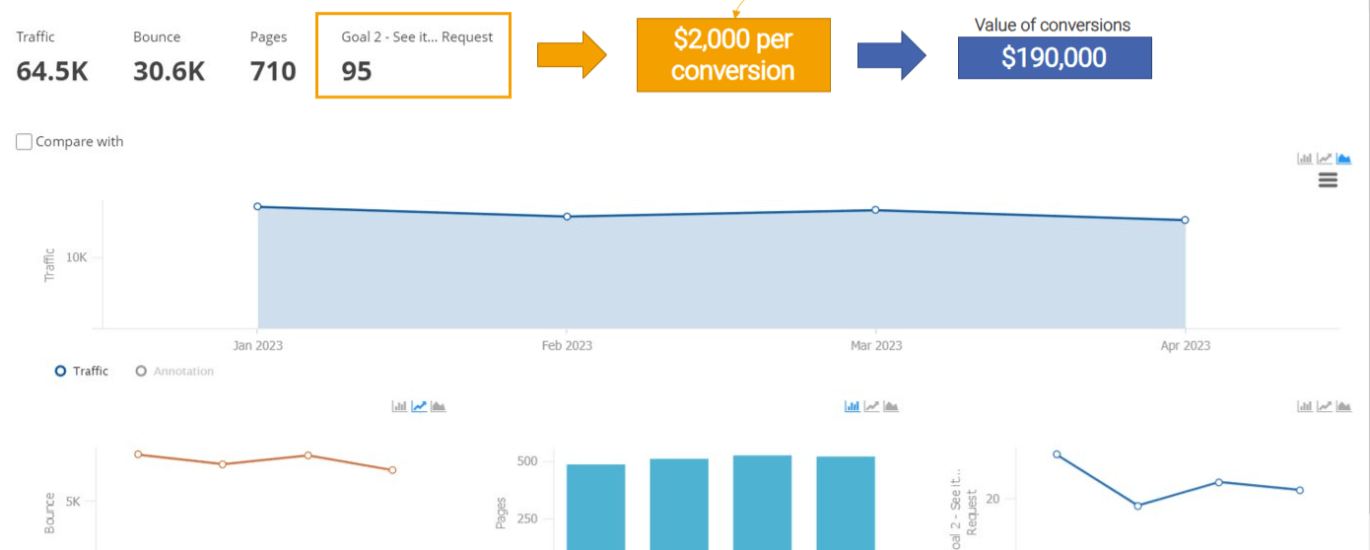


SEO is like planting seeds for a lush garden—you can’t just measure success by the number of bees (traffic) buzzing around. What matters is how much fruit (revenue and leads) it yields!” To truly measure the ROI of your SEO campaigns beyond traffic, focus on metrics that tie directly to business growth, such as conversions, customer lifetime value (CLV), and revenue generated from organic efforts.
Use a simple formula:
ROI (%) = [(Revenue from SEO – Cost of SEO) / Cost of SEO] × 100
Example: If you invest ₹1,00,000 in SEO and gain ₹3,00,000 in revenue, your ROI is 200%. This gives a clear picture of profitability beyond visitor counts HawkSEM.
Improved keyword rankings directly affect organic click-through rates (CTR), which then drive valuable traffic. For example, ranking #1 for a keyword can earn a 27.6% CTR, dramatically increasing conversions HawkSEM.
SEO often plays a supporting role in multi-channel journeys. Tools like Google Analytics allow you to track assisted conversions, ensuring SEO’s contribution isn’t overlooked Semrush.
Combine search volume, ranking potential, and average conversion rates using platforms like SEMrush. This helps estimate potential SEO outcomes even before campaigns begin HawkSEM.
SEO is more than just driving traffic—it’s about delivering measurable business value. By shifting the focus to actionable metrics, you can align SEO with your organization’s revenue goals and prove its worth.
For further details, check insights from HawkSEM and Databox, or consult actionable tools like Google Tag Manager and Semrush, Ranktracker, HawkSEM.